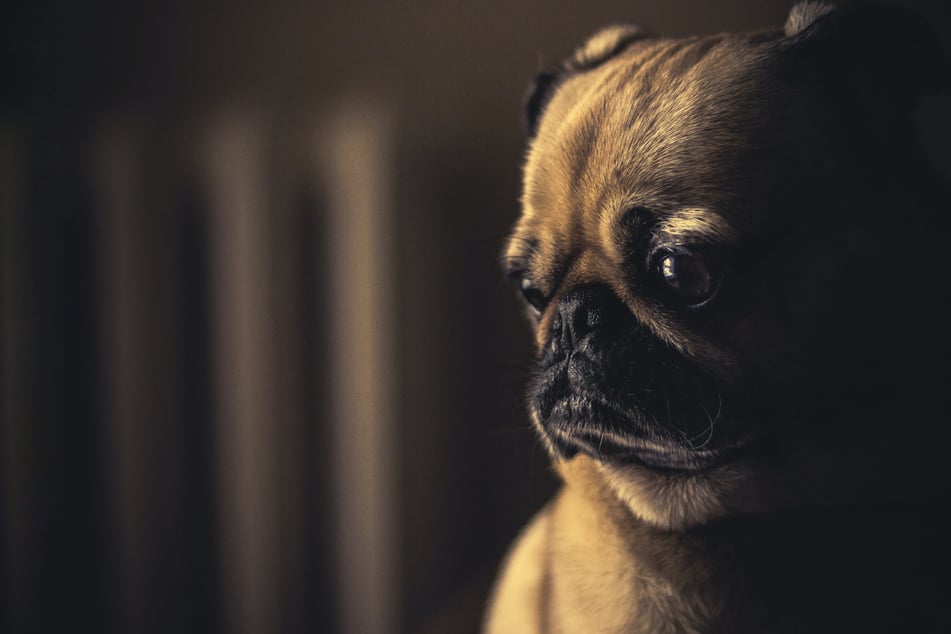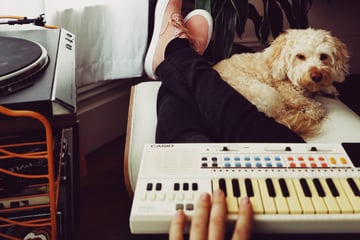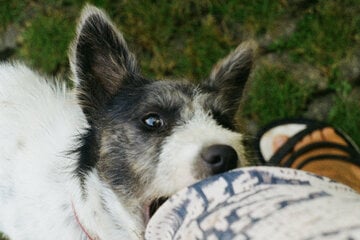Dogs going into heat: Symptoms, treatments, and everything else you need to know
Does your dog suddenly have very little appetite, or is it behaving strangely? It could be in heat. What does that mean, what are the symptoms, and what can you do?

Once your dog has reached maturity, it will start going through periods of being "in heat," characterized by unusual behavior and a little bit of messiness.
It's important to develop a good understanding of what this means, as it's your responsibility to look after that doggo all night and day.
In this dog guide, TAG24 takes a look at what it means for a dog to be in heat. What are the key symptoms of a dog in heat, what should you look out for, and what can you do to help?
What does it mean when a dog is in heat?
Female dogs go through a number of different phases in their reproductive cycle. These four phases spread out over a long period of time, as dogs don't have the same monthly cycle that humans do. Instead, heat comes on as a seasonal thing, resulting in puppies appearing often at similar times between doggos.
Here are the four phases of a dog's heat cycle:
- Proestruso: Bleeding, similar to a human's period, and swelling of the vulva. Lasts about two weeks.
- Estrus: This is the fertility period (so the time in which we would refer to her being "in heat"). The dog's eggs have been released from her ovaries and she is ready to accept a male mate. Lasts about 3 weeks.
- Diestrus: If the dog becomes pregnant during the Estrus phase, the Diestrus phase will last until the end of her pregnancy. This is an infertile period and lasts about 2–3 months.
- Anestrus: The "resting" stage between heat cycles, lasts around 3–4 months.
Hot tip: It's useful to identify the Proestruso phase, as it gives you an indication of what's coming. The most obvious symptom of this period of time is the dog's bleeding. She'll also become more grumpy and may have a noticeable change in appetite.
Why do dogs go into heat?
A dog's heat is the fertile period of its reproductive cycle, so the canine equivalent of a human woman's monthly period. Dogs go into heat because their ovaries have released the egg, and their bodies are telling them that it is time for them to find a male mate.
People may also note that male dogs seem to go through similar cycles, despite not actually going "into heat." This is a matter of pheromones and hormones that are triggered when female dogs are in heat, making it clear to male dogs that their female friends are ripe and ready! During this period, you might find that your male dog develops a fond humping habit.
Dog in heat symptoms
Dogs in heat will experience many different behavioral changes, many due to physical reactions to uncomfortable feelings. There are visible signs that indicate to you that your dog is in heat, and there are other symptoms that may or may not be difficult to recognize.
Here are the key symptoms of a dog in heat:
- Male dogs are suddenly far more interested in her
- Increased aggressiveness, especially towards male dogs
- Extreme disobedience, tugging on the leash
- Increased licking of genital areas
- She is highly demanding in asking for food and exhibits very naughty behavior
- She will get very tired and want to sleep a lot
- A change in appetite is likely, either increased or decreased
- Swollen vagina and bleeding
How do male dogs know? When a female doggo is in heat, her smell changes. Humans don't have the best sense of smell and won't notice this change in their dog. Male dogs will notice and understand what it means, leading to increased interest and a lot of sniffing!

How long does a dog stay in heat?
A dog's active period of heat, the Estrus phase of its cycle, generally lasts 2–3 weeks. Of course, between dogs this time can vary and can last for both less than two weeks and more than three weeks. Symptoms also begin to develop during that first phase as well, so in a way it somewhat depends on your definition of when a dog is in heat.
How often is a dog in heat?
Dogs will generally go into heat twice a year, so once every six months. It's not necessarily seasonal, though it can seem that way because of the long periods spent in between heat cycles. Cats are a bit different, as the coming of spring will often trigger them to go into heat.
What to do when your dog is in heat

The most important thing to do when your dog is in heat is to keep her comfortable and happy, as we will explain in detail in the following section. That's kind-of obvious, though, so let's first go through a few things that are important even if they are not as clear-cut.
Here are a few things to when your dog goes into heat:
- Make sure she doesn't get pregnant: If your dog hasn't been neutered, it really should be. In any case, you need to make sure your dog doesn't mate with a male. Never let her off the leash on walks, and if you live with a neutered male and a female dog, keep them in separate rooms.
- Even if she is neutered, keep her away from males: Neutering won't stop lust, so it is a good idea to keep your female dog away from the males when she is in heat.
- Use special doggy diapers: Female dogs will bleed when they are in heat, so it might be a good idea to use special diapers so they don't ruin your furniture or make a mess. Just remember to take it off before letting your dog outside so she can go to the toilet.
Dogs can behave badly during this period and may be hard to control. Reduce the walks you take and make sure your pup is well-fed to try to minimize that bad behavior.
Home remedies for dogs in heat
There are a variety of easy things to do in your home to keep your dog comfortable and happy even when it's in heat. It's about love and affection, making her feel safe and looked after. While this isn't a problem that you can solve for your doggo, you can make it less awful.
Here are a few home remedies for dogs in heat:
- Provide more attention and pats: It's important to provide your dog with a bit of love during this time. Give her plenty of cuddles, let her relax as much as she wants, and spend some extra time at home with her.
- Keep her clean: Make sure you bathe your darling doggo when she's in heat. This will help to make her more comfortable and will reduce the attention she may get from male dogs.
- Keep her at home: While you should still take her for a daily walk, try to keep her home more than you usually would. You don't want her to get overly tired, or to attract unwanted attention.
- Spoil her with food: Give her some treats, some of her favorite food, and plenty of water.
- Guarantee plenty of rest: Your dog needs to be kept well-rested and relaxed. Provide comfortable sleeping spots and incentivize resting.
Just be kind: While your dog may start to behave badly, it's going through something rather unpleasant, so try to be kind to her. Sure, she might make a mess, and it might be annoying for everyone involved, but show her some love!
Your dog may change her behavior when in heat, but don't worry!
All dogs will go through periods of heat, and when they do, it is not unusual for their behavior to become rather repugnant. Keep watch of them and keep an eye out for signs of pain and distress. You don't want problems to arise, and if they do, you should go to the veterinarian.
Try not to worry too much: your dog will be out of this period soon, and her behavior will return to normal. If it lasts too excessively long, or if the symptoms are particularly severe, it's always best to err on the side of caution.
Cover photo: Unsplash/Matthew Henry




